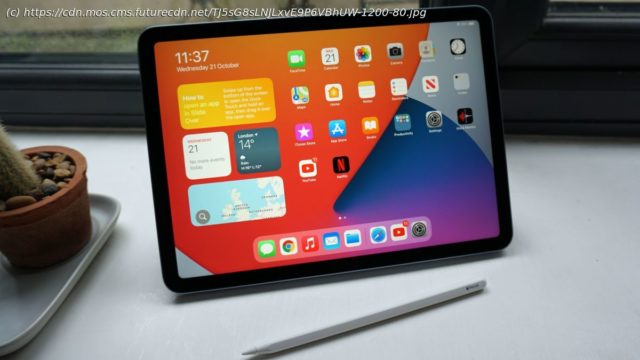The iPad Air 4 (2020) is a powerhouse slate that makes it difficult to justify opting for the iPad Pro when this model offers so much for a lower price.
The iPad Air 4 (2020) doesn’t bring anything revolutionary to Apple’s tablet range, but a lot of the features that were previously exclusive to the iPad Pro have trickled down to this far more affordable, and therefore more attractive, device, While this is a tablet that’s unlikely to tempt power-hungry users away from the iPad Pro, it brings a lot of what makes that series of tablets great to a cheaper device, albeit one that isn’t as cheap as the standard iPad. Finally, the iPad Air 4 (2020) is the middle choice between both extremes of Apple’s tablet lineup. Starting with the obvious bad news, Apple has increased the price of the iPad Air over the last generation by $100 / £100 / AU$120 to $599 / £579 / AU$899. But the extra spec you’re getting here, as well as the improved design, make that an understandable move from the company, and it feels justified. Like the iPad Pro range the iPad Air 4 comes with an almost all-screen front, and supports the Apple Pencil (second generation); it also has the same squared-edge design. The iPad Air 4 is powered by Apple’s new top-end A14 chipset, which is also at the heart of the iPhone 12 range. It offers unrivaled power, ensuring that the Air can comfortably perform any task you ask of it, from running demanding apps to streaming high-quality video. There are two powerful speakers (though there are four speaker grilles) that offer high-quality audio when you’re watching videos or films, and the rear camera has been upgraded to a 12MP shooter. Everything feels a touch more refined on the iPad Air 4, so much so that it’s now difficult to justify opting for an iPad Pro if you like this design but aren’t desperate for a fast-refreshing 120Hz display. If you need more storage space or a slightly larger screen you’ll probably want to consider the iPad Pro range; but the iPad Air 2020 is improved in almost every conceivable way, making it hard to overlook if you want a top-of-the line iPad without quite spending top dollar. The iPad Air 4 release date is confirmed for October 23. You can pre-order the tablet now at Apple’s website, and we expect to see other retailers offering it soon. The iPad Air 4 price starts at $599 / £579 / AU$899. That’s quite a hike over its predecessor, but as we’ve mentioned you’re getting a big specs jump here that arguably justifies the increase. It’s available in a variety of configurations, with either 64GB or 256GB of storage, and with LTE connectivity or just Wi-Fi – see below for a full list of spec and price options. For reference, the iPad Air 3 started at $499 / £479 / AU$779 for the Wi-Fi only model with 64GB storage, and $649 / £629 / AU$999 for 256GB. The design of the iPad Air has a lot in common with the iPad Pro range. The home button has been dropped in favor of an all-screen design to make it more in line with Apple’s Pro products. And, indeed, the iPad Air 4 feels a lot more premium than the iPad Air 3. That slate was criticized for its dated-feeling design, and it looks like Apple took notice. We’ve used this tablet alongside the new iPad 2020, which sports the more traditional iPad look, and it’s remarkable how much the Air feels different to that tablet thanks to its straight edges and all-screen front. There are still thick bezels around the outside of the display, as there are on the iPad Pro, but overall it feels like a big step up compared to the design of last year’s Air. The edges are more-squared, with sharper edges than on previous tablets from the company, and if you’re upgrading from an older device that may take some getting used to, as those edges don’t sit as comfortably in your palm. That said, we felt we had better grip thanks to this design, and it gives the tablet as a whole a distinct look and feel that’s more in line with the new iPhone 12 family, and iPad Pro range. There are four speakers, two each on the top and bottom edges, and a lock button at the left of the top edge – this also houses the Touch ID scanner if you want to unlock your slate with your fingerprint.






